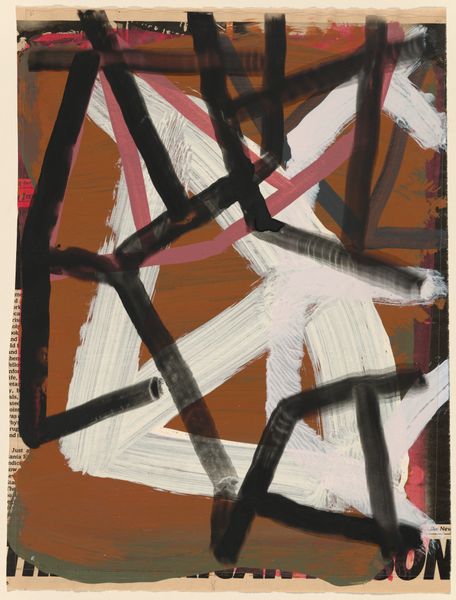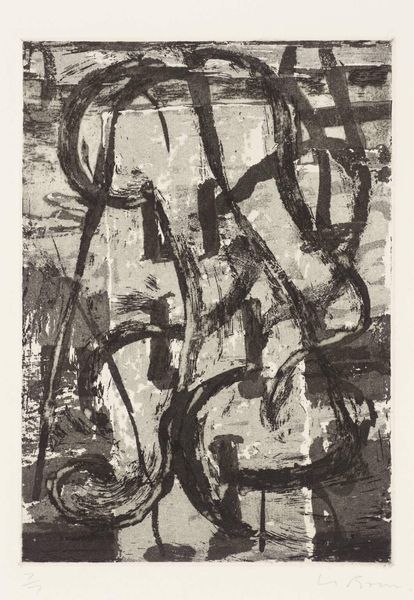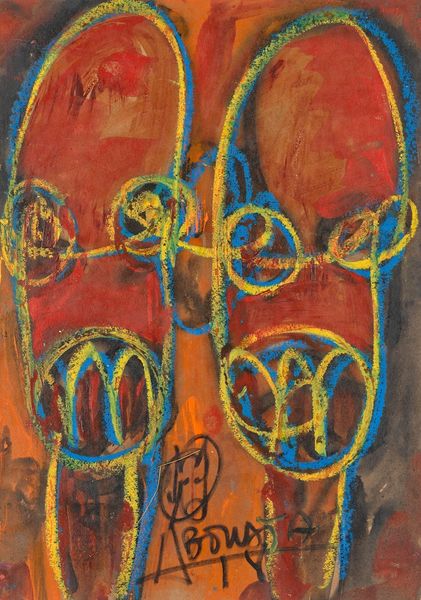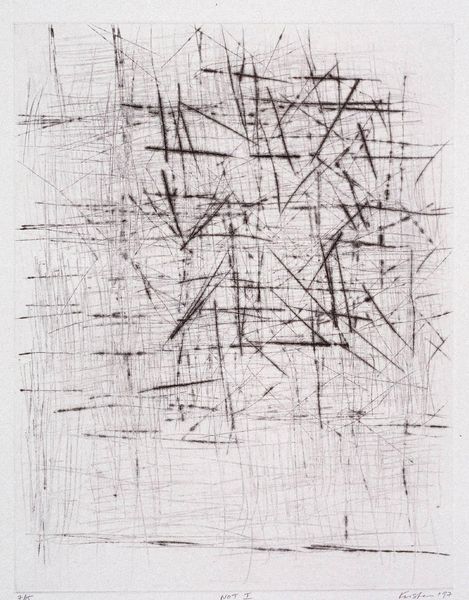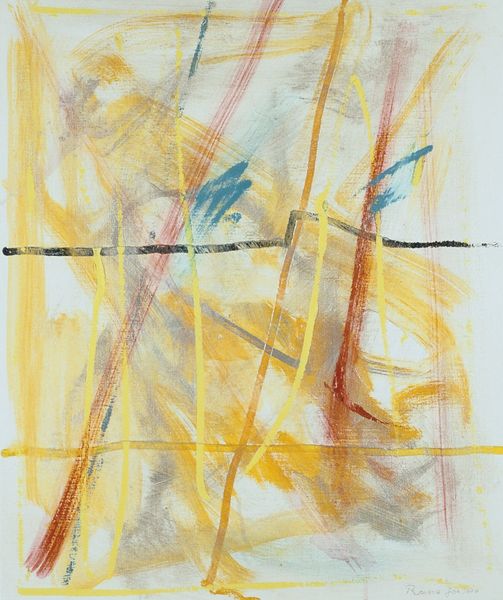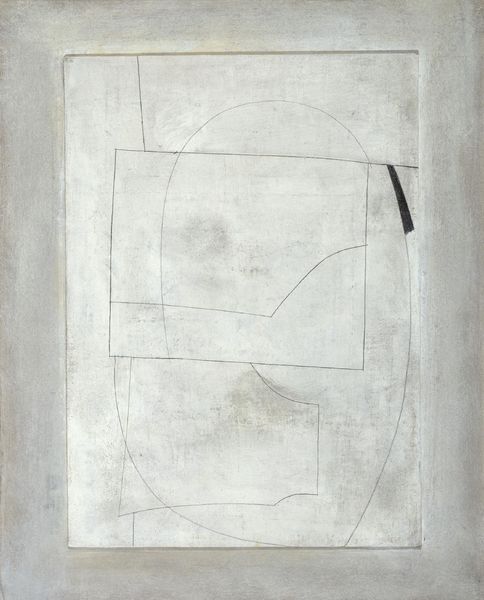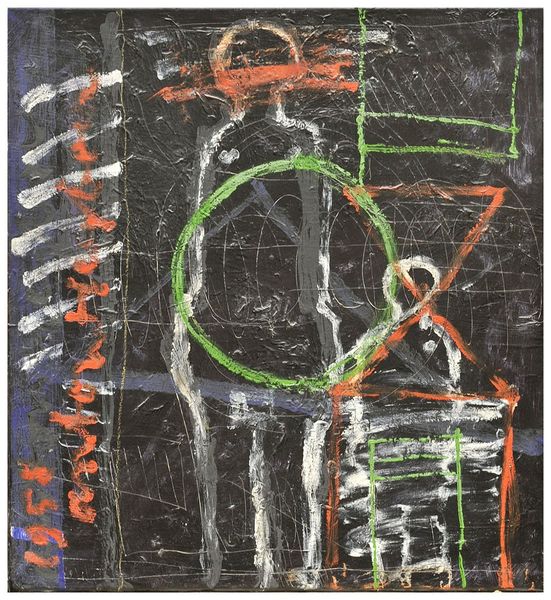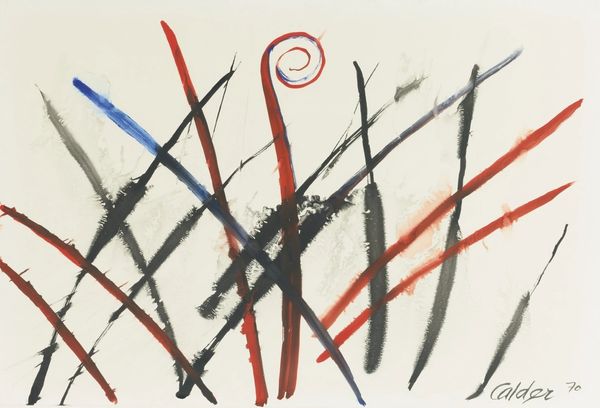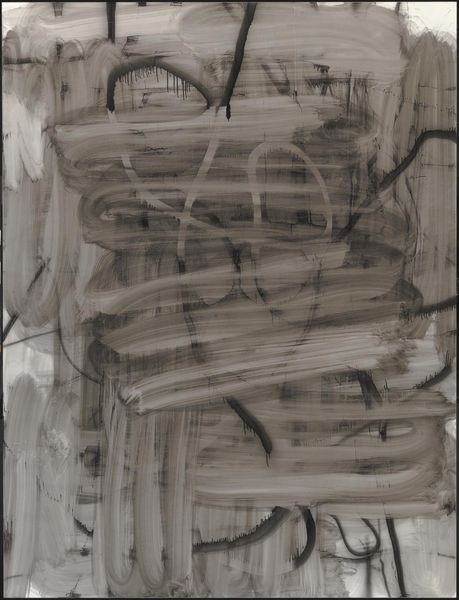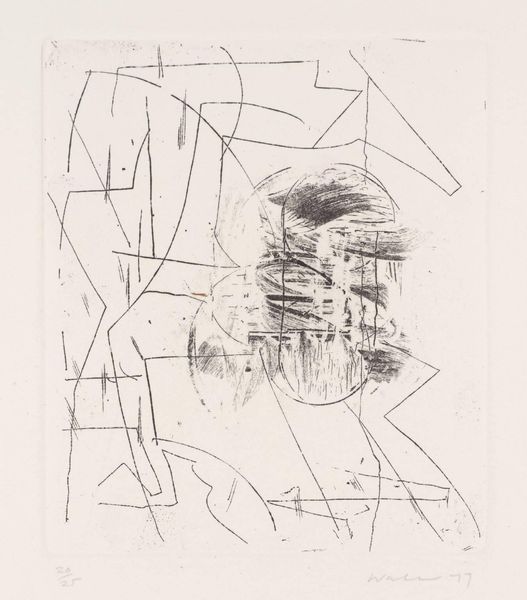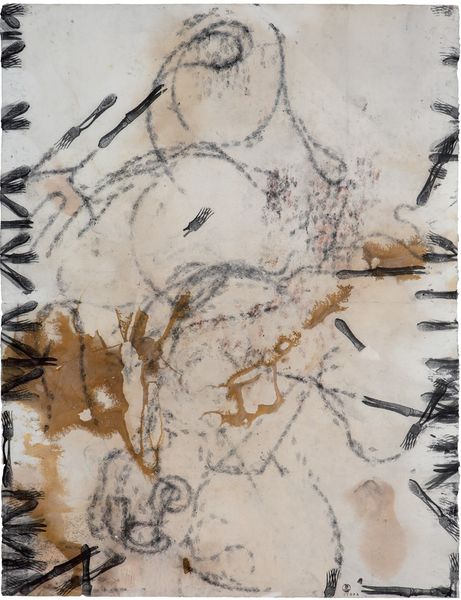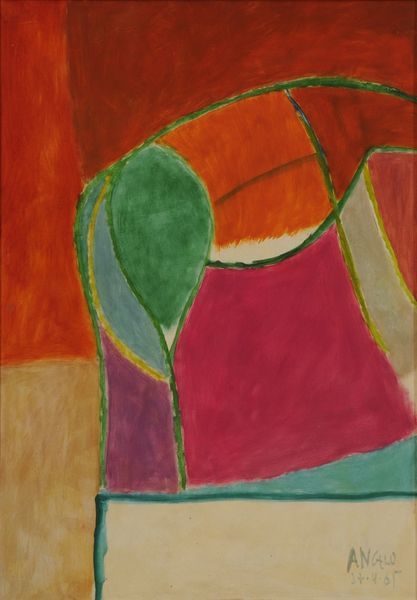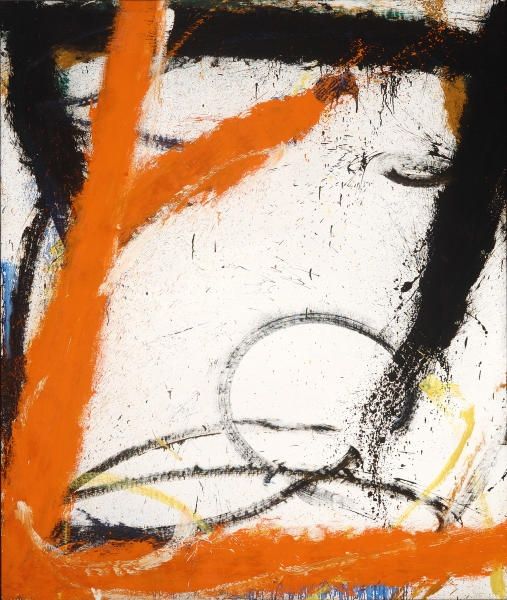
Copyright: Susan Rothenberg,Fair Use
Editor: This is Susan Rothenberg’s "Triple Form," painted in 1982 using acrylic on canvas. There's something quite haunting about the simplified shapes. I’m curious, looking at it, how do you interpret this work within its historical context? Curator: Well, considering Rothenberg emerged during a period dominated by minimalist abstraction, her re-introduction of figuration was a radical move. These forms, although abstract, suggest a human presence, disrupting the prevailing aesthetics of the time. How might the reception of this work have differed then compared to now? Editor: I imagine the art world might have found it a bit… jarring? It feels so raw and emotional compared to the cooler, more intellectual art that was trending. Did the roughness of her brushwork affect how critics viewed her work at the time? Curator: Absolutely. The rough brushstrokes and simplified forms were seen as challenging the established order. Critics grappled with placing her within existing art historical narratives. Rothenberg deliberately countered the male-dominated Abstract Expressionist movement with her own raw and gestural language. It questioned who gets to express emotion, and in what form. Does knowing that change how you perceive it now? Editor: It definitely gives the painting more weight. Knowing that it challenged those norms and gave the language a space. Is it a conversation about inclusion in the artistic discourse of that period? Curator: Precisely! The painting becomes a commentary on who gets to participate, whose voice is valued. It makes you think about the politics inherent in representation, even abstract representation. Editor: That makes so much sense now. Thanks for illuminating the socio-political dimensions of this artwork. I'll certainly be looking at art with a more critical eye. Curator: And I’ll be considering how my own perspectives are shaped by historical narratives!
Comments
No comments
Be the first to comment and join the conversation on the ultimate creative platform.
